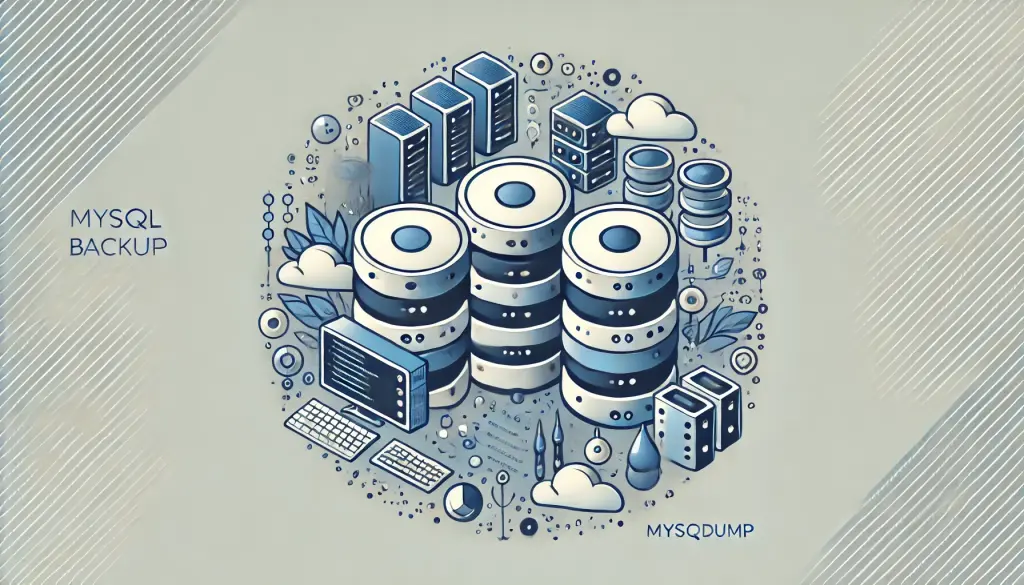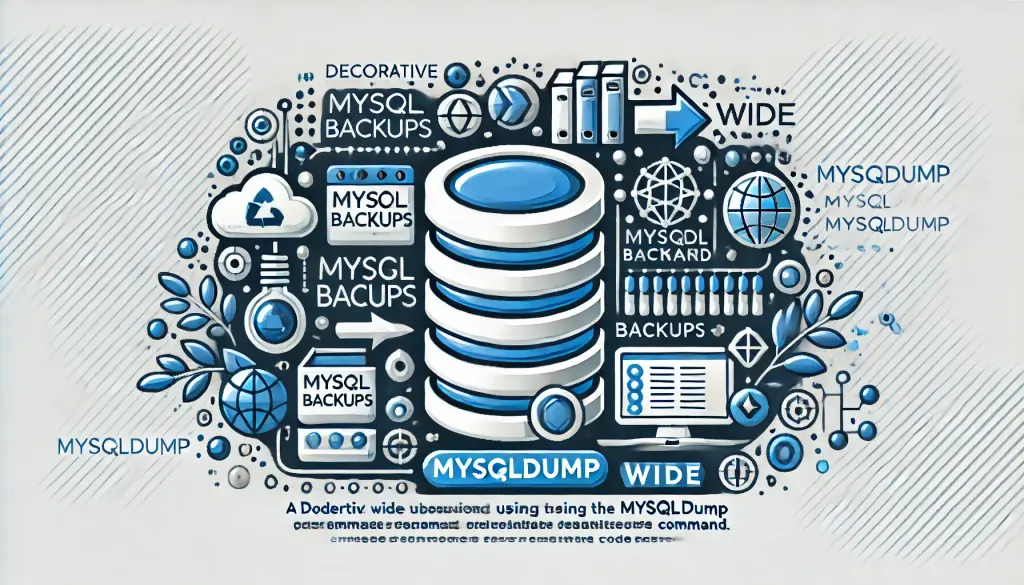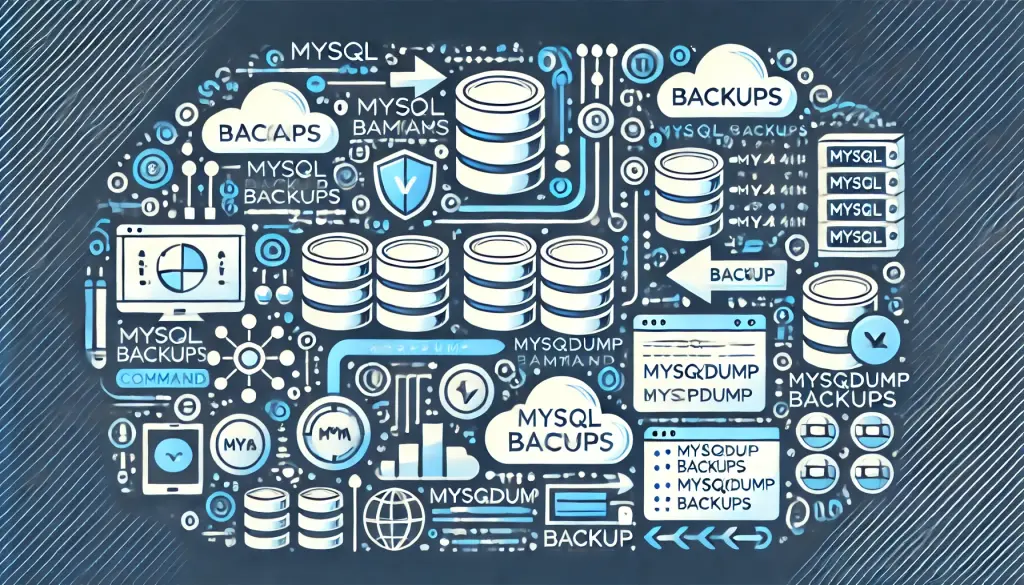1. Introduction
Backing up and restoring MySQL databases is a critical task for maintaining system security and stability. In case of unexpected data loss or server failure, it’s essential to have a recovery plan in place. The mysqldump command is one of the most common tools for backing up MySQL databases, known for its simple syntax and flexible options.
This article will walk you through the basics of the mysqldump command, how to use advanced options, and step-by-step instructions for restoring from a backup.
2. Basic Syntax of mysqldump
The mysqldump command is used to dump (export) MySQL data and structures. Let’s start by reviewing the basic syntax.
mysqldump -u [username] -p [database_name] > [output_file.sql]Parameter Explanation
- -u [username]: Specifies the MySQL username to connect with.
- -p: Prompts for the MySQL password (if omitted, you will be asked interactively).
- [database_name]: The name of the database you want to back up.
- > [output_file.sql]: The path and name of the dump file to be created.
By adding options to this basic syntax, you can generate dump files tailored for different use cases.
Sample Command
mysqldump -u root -p my_database > my_database_backup.sqlThis command backs up the database named my_database into a file called my_database_backup.sql.

3. Common Options and Their Usage
3.1 –all-databases
The --all-databases option allows you to back up all databases on the MySQL server at once, making it useful for managing multiple databases together.
mysqldump -u root -p --all-databases > all_databases_backup.sql3.2 –no-data
With the --no-data option, only the database schema (structure) is dumped without the actual data. This is useful when you want to replicate just the table definitions.
mysqldump -u root -p --no-data my_database > my_database_schema.sql3.3 –add-drop-table
The --add-drop-table option includes DROP TABLE statements in the dump file. This prevents duplicate tables during restoration and makes overwriting existing tables easier.
mysqldump -u root -p --add-drop-table my_database > my_database_backup.sql3.4 –lock-tables
The --lock-tables option locks the tables while performing the backup to prevent changes during the dump process. This is especially useful when dealing with live production databases.
mysqldump -u root -p --lock-tables my_database > locked_backup.sql4. Advanced Options
4.1 Conditional Dumps with –where
The --where option allows you to dump data based on specific conditions. For example, you can back up only records created after a certain date.
mysqldump -u root -p my_database --where="created_at >= '2023-01-01'" > filtered_data_backup.sqlIn this example, only records where the created_at field is on or after January 1, 2023 are backed up.
4.2 –xml Option
The --xml option exports data in XML format. Use this when you need to provide database data to applications or systems that require XML.
mysqldump -u root -p --xml my_database > database_backup.xml
5. Restoring Data with mysqldump
To restore a database from a backup created with mysqldump, use the mysql command:
mysql -u [username] -p [database_name] < [backup_file.sql]5.1 Restoration Example
The following command restores the my_database database from the my_database_backup.sql file:
mysql -u root -p my_database < my_database_backup.sqlImportant Notes
- Risk of Overwriting: Restoring may overwrite existing data, so proceed with caution.
- Check Encoding: When handling multi-byte characters, ensure encoding is consistent to avoid corrupted data.
6. Backup Strategy Tips
6.1 Automating Regular Backups
Since database content changes frequently, it’s important to automate backups. You can use cron jobs to schedule daily backups.
0 2 * * * mysqldump -u root -p my_database > /path/to/backup/my_database_$(date +%F).sqlIn this example, the backup runs every day at 2 AM, with the current date included in the filename.
6.2 Incremental Backups
Instead of backing up the entire database every time, incremental backups can save only the changes. By using the --where option to dump recently modified data, you can make the process more efficient.

7. Conclusion
The mysqldump tool is a simple yet powerful way to back up MySQL databases. By understanding both the basic usage and advanced options, you can build a solid backup strategy that enhances system reliability and data protection. Automating regular backups and using incremental strategies are key to efficient database management.
Use this guide to optimize your backup process with mysqldump and strengthen your database administration skills.



